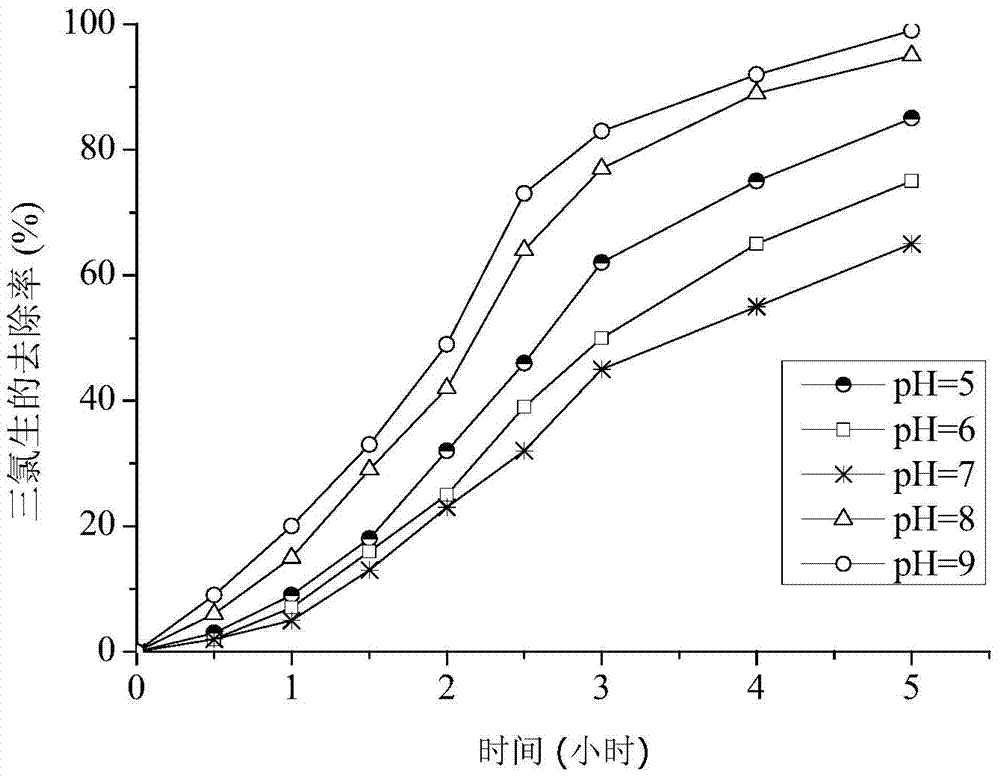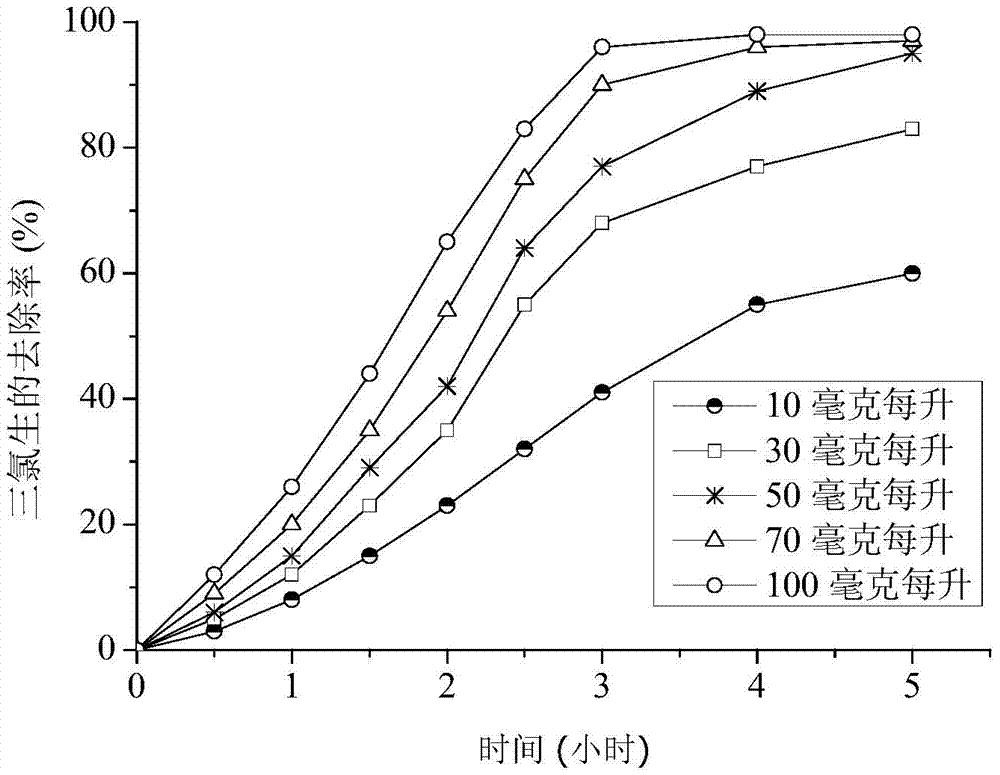Method for carrying out intensified reductive dechlorination on triclosan in sewage by using vitamin B12
A technology of B12 and vitamins, applied in the direction of reduced water/sewage treatment, etc., can solve the problems of uneconomical and high cost, and achieve the effects of fast reaction rate, reduced toxicity and low cost
- Summary
- Abstract
- Description
- Claims
- Application Information
AI Technical Summary
Problems solved by technology
Method used
Image
Examples
Embodiment 1
[0025] B vitamins first 12 An enhanced reductive dechlorination method for triclosan in sewage, treating sewage containing 10 mg of triclosan per liter.
[0026] Adjust the initial pH value of sewage to 5, and add vitamin B to the system at the same time 12 50 milligrams per liter of sewage, 0.5 grams of nano-zero-valent iron per liter of sewage, and stir evenly, wherein the particle diameter of nano-zero-valent iron is 50-70 nanometers.
Embodiment 2
[0028] The difference from Example 1 is that the initial pH value of the sewage should be adjusted to 6.
Embodiment 3
[0030] The difference from Example 1 is that the initial pH value of the sewage should be adjusted to 7.
PUM
| Property | Measurement | Unit |
|---|---|---|
| Particle size | aaaaa | aaaaa |
Abstract
Description
Claims
Application Information
 Login to View More
Login to View More - R&D
- Intellectual Property
- Life Sciences
- Materials
- Tech Scout
- Unparalleled Data Quality
- Higher Quality Content
- 60% Fewer Hallucinations
Browse by: Latest US Patents, China's latest patents, Technical Efficacy Thesaurus, Application Domain, Technology Topic, Popular Technical Reports.
© 2025 PatSnap. All rights reserved.Legal|Privacy policy|Modern Slavery Act Transparency Statement|Sitemap|About US| Contact US: help@patsnap.com


